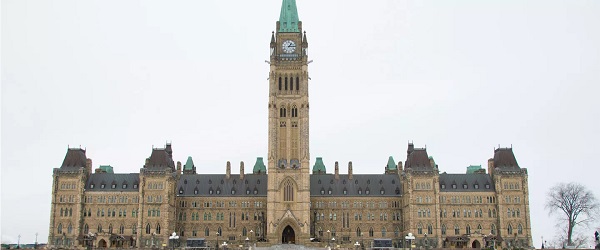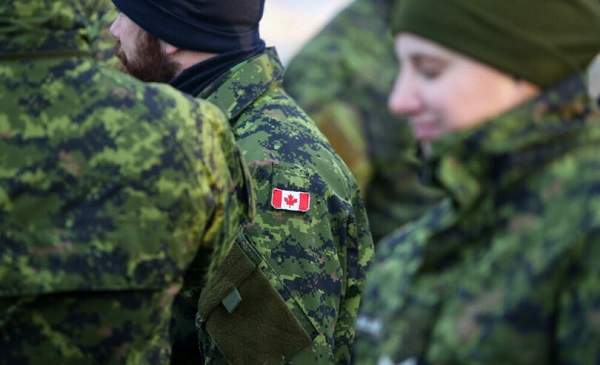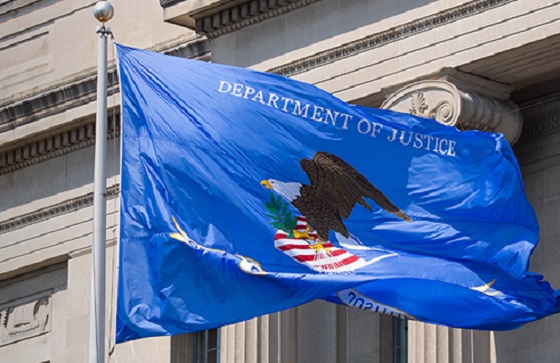Alberta
Suspect in police incident shot, officers find handgun on scene

This release is distributed by the Government of Alberta on behalf of the Alberta Serious Incident Response Team.
ASIRT investigation continues into CPS officer-involved shooting causing injury in Calgary
On Feb. 8, the Alberta Serious Incident Response Team (ASIRT) was directed to investigate an officer-involved shooting in the City of Calgary.
At approximately 4 a.m. that day, the Calgary Police Service (CPS) responded to a 911 call from a residence on Hendon Drive NW. The caller stated that a “giant truck” had hit her residence and a parked vehicle. CPS officers attended and observed the truck repeatedly hitting a parked vehicle at the residence.
As a CPS officer approached the truck, the driver pointed an item resembling a handgun at the officer. The officer discharged their firearm, striking the driver once. The driver attempted to leave the scene in the truck but was unsuccessful. The CPS tactical team attended and after approximately 1.5 hours, the driver exited the truck and was arrested. The driver suffered a gunshot wound to the chest and was taken to hospital for treatment.
Below is a photo of the seized item found in the truck after the driver was taken into custody.
ASIRT’s investigation will examine the use of force by the officer. No additional information will be released.
ASIRT’s mandate is to effectively, independently and objectively investigate incidents involving Alberta’s police that have resulted in serious injury or death to any person, as well as serious or sensitive allegations of police misconduct.
Alberta
Alberta’s Massive Carbon Capture and Storage Network clearing hurdles: Pathways Alliance

From the Canadian Energy Centre
By Will GibsonPipeline front-end engineering and design to be complete by end of year
Canada’s largest oil sands companies continue to advance a major proposed carbon capture and storage (CCS) network in northeast Alberta, including filing regulatory applications, conducting engineering and design, doing environmental surveys and consulting with local communities.
Members of the Pathways Alliance – a group of six companies representing 95 per cent of oil sands production – are also now closer to ordering the steel for their proposed CO2 pipeline.
“We have gone out to potential pipe suppliers and asked them to give us proposals on costs and timing because we do see this as a critical path going forward,” Imperial Oil CEO Brad Corson told analysts on November 1.
He said the next big milestone is for the Pathways companies to reach an agreement with the federal and provincial governments on an economic framework to proceed.
“Once we have the right economic framework in place, then we will be in a position to go order the line pipe that we need for this 400-kilometre pipeline.”
Pathways – which also includes Suncor Energy, Canadian Natural Resources, Cenovus Energy, MEG Energy and ConocoPhillips Canada – is proposing to build the $16.5 billion project to capture emissions from oil sands facilities and transport them to an underground storage hub.
The project was first announced in 2022 but Pathways had not provided recent public updates. The organization had stopped advertising and even briefly shut down its website during the summer in wake of the federal government’s amendments to the Competition Act in June.
Those changes include explicit provisions on the need to produce “adequate and proper testing” to substantiate environmental benefit claims. Critics say the provisions could lead to frivolous lawsuits and could or even scuttle the very projects that Canada is relying on to slash greenhouse gas emissions.
In early December, the Alberta Enterprise Group (AEG) and the Independent Contractors and Businesses Association jointly filed a constitutional challenge against the federal government over the new “greenwashing” rules, which they say unreasonably restrict free speech.
“These regulations pre-emptively ban even truthful, reasonable and defensible discussion unless businesses can meet a government-imposed standard of what is the truth,” said AEG president Catherine Brownlee.
Pathways has since restored its website, and president Kendall Dilling said the organization and its member companies continue working directly with governments and communities along the corridors of the proposed CCS project.
Canadian Natural Resources began filing the regulatory applications to the Alberta Energy Regulator on behalf of Pathways earlier in the year. The company has so far submitted 47 pipeline agreement applications along with conservation and reclamation plans in seeking approvals for the CO2 transportation network.
Pathways has also continued consultation and engagement activities with local communities and Indigenous groups near its pipeline corridors and storage hubs.
“Engagement is ongoing with local communities, Indigenous groups and landowners, as well as a consultation process with Indigenous groups in accordance with Aboriginal Consultation Office requirements,” Dilling says.
An environmental field program that began in 2021 continues to survey the network’s project areas.
“Environmental field studies are ongoing and we are supporting Indigenous groups in completing traditional land use studies,” Dilling says.
“Studies are supported by hundreds of heritage resource assessments, wetland classifications, soil assessments, aquatic habitat evaluations and other environmental activities.”
In addition to working with governments and communities, Pathways expects front-end engineering and design on the proposed 400-kilometre-plus main transportation line and more than 250 kilometres of connecting pipelines to be complete by the end of this year.
Pathways has also drilled two test wells in the proposed storage hub and plans to drill another two or three evaluation wells in the final quarter of 2024.
Alberta
Free Alberta Strategy trying to force Trudeau to release the pension calculation


Just over a year ago, Alberta Finance Minister Nate Horner unveiled a report exploring the potential risks and benefits of an Alberta Pension Plan.
The report, prepared by pension analytics firm LifeWorks – formerly known as Morneau Shepell, the same firm once headed by former federal Finance Minister Bill Morneau – used the exit formula outlined in the Canada Pension Plan Act to determine that if the province exits, it would be entitled to a large share of CPP assets.
According to LifeWorks, Alberta’s younger, predominantly working-class population, combined with higher-than-average income levels, has resulted in the province contributing disproportionately to the CPP.
The analysis pegged Alberta’s share of the CPP account at $334 billion – 53% of the CPP’s total asset pool.
We’ve explained a few times how, while that number might initially sound farfetched, once you understand that Alberta has contributed more than it’s taken out, almost every single year CPP has existed, while other provinces have consistently taken out more than they put in and technically *owe* money, it starts to make more sense.
But, predictably, the usual suspects were outraged.
Media commentators and policy analysts across the country were quick to dismiss the possibility that Alberta could claim such a significant portion. To them, the idea that Alberta workers had been subsidizing the CPP for decades seemed unthinkable.
The uproar prompted an emergency meeting of Canada’s Finance Ministers, led by now-former federal Finance Minister Chrystia Freeland. Alberta pressed for clarity, with Horner requesting a definitive number from the federal government.
Freeland agreed to have the federal Chief Actuary provide an official calculation.
If you think Trudeau should release the pension calculation, click here.
Four months later, the Chief Actuary announced the formation of a panel to “interpret” the CPP’s asset transfer formula – a formula that remains contentious and could drastically impact Alberta’s entitlement.
(Readers will remember that how this formula is interpreted has been the matter of much debate, and could have a significant impact on the amount Alberta is entitled to.)
Once the panel completed its work, the Chief Actuary promised to deliver Alberta’s calculated share by the fall. With December 20th marking the last day of fall, Alberta has finally received a response – but not the one it was waiting for:
“We received their interpretation of the legislation, but it did not contain a number or even a formula for calculating a number,” said Justin Brattinga, Horner’s press secretary.
In other words, the Chief Actuary did the complete opposite of what they were supposed to do.
The Chief Actuary’s job is to calculate each province’s entitlement, based on the formula outlined in the CPP Act.
It is not the Chief Actuary’s job to start making up new interpretations of the formula to suit the federal government’s agenda.
In fact, the idea that the Chief Actuary spent all this time working on the issue, and didn’t even calculate a number is preposterous.
There’s just no way that that’s what happened.
Far more likely is that the Chief Actuary did run the numbers, using the formula in the CPP Act, only for them – and the federal government – to realize that Alberta’s LifeWorks calculation is actually about right.
Cue panic, a rushed attempt to “reinterpret” the formula, and a refusal to provide the number they committed to providing.
In short, we simply don’t believe that the Chief Actuary didn’t, you know, “actuarialize” anything.
For decades, Alberta has contributed disproportionately to the CPP, given its higher incomes and younger population.
Despite all the bluster in the media, this is actually common sense.
A calculation reflecting this reality would not sit well with other provinces, which have benefited from these contributions.
By withholding the actual number, Ottawa confirms the validity of Alberta’s position.
The refusal to release the calculation only adds fuel to the financial firestorm already underway in Ottawa.
Albertans deserve to know the truth about their contributions and entitlements.
We want to see that number.
If you agree, and want to see the federal government’s calculation on what Alberta is owed, sign our petition – Tell Trudeau To Release The Pension Calculation:
Once you’ve signed, send this petition to your friends, family, and all Albertans.
Thank you for your support!
Regards,
The Free Alberta Strategy Team
-

 Alberta10 hours ago
Alberta10 hours agoFree Alberta Strategy trying to force Trudeau to release the pension calculation
-

 Daily Caller9 hours ago
Daily Caller9 hours agoParty Leaders Exposed For ‘Lying’ About Biden Health
-

 Business8 hours ago
Business8 hours agoComparing four federal finance ministers in moments of crisis
-

 Business6 hours ago
Business6 hours agoTwo major banks leave UN Net Zero Banking Alliance in two weeks
-

 armed forces7 hours ago
armed forces7 hours agoCanada among NATO members that could face penalties for lack of military spending
-

 armed forces2 days ago
armed forces2 days agoCanadian military deployed ‘gender advisors’ to Ukraine, Haiti at taxpayers’ expense
-

 espionage6 hours ago
espionage6 hours agoChinese spies arrested in California
-

 Business5 hours ago
Business5 hours agoGlobal Affairs Canada Foreign Aid: An Update







